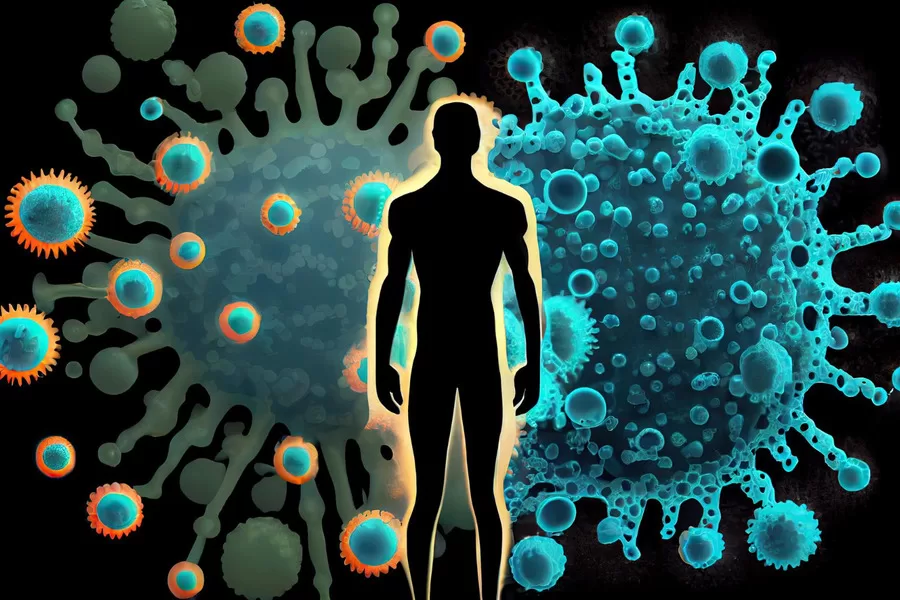More than 69,000 people died of parasitic infections in 2021 in the US alone, according to the WHO. However, parasites remain relevant for almost all countries in the world. In this article, we’ll tell you about some of the most common parasites that use humans as hosts, speak about their impact on human health, and outline some prevention methods that have proven their effectiveness.
What Are Parasites?
Parasites are live organisms that live on the skin or inside the human body. Such organisms get their food at the expense of their host, thus doing harm and provoking some dangerous health conditions. According to the WHO, more than 4.5 billion people are infected with parasitic infections worldwide, and 16 million die annually.
However, there is some scientific evidence that certain helminths and protozoa are beneficial for the human body. Studies suggest that certain species can alleviate the symptoms of type 1 diabetes, Crohn’s disease, and inflammatory bowel disorder. While these assumptions need further research, they still give some food for thought.
Parasitic Life Cycles
The life cycles of parasitic organisms include three stages:
- Growth;
- Reproduction;
- Transmission.
Parasites go through all these stages while staying in host organisms. Monoxenous parasites spend most of their lives in one host. The transmission stage of their life cycle requires leaving the host’s body, so they can survive in an outside environment. Heteroxenous parasites, on the other hand, cannot survive outside of a host. They spend their adult lives in a definitive host, while their development and transition stages require an intermediate host.
Impact of Parasites on Human Health
Until lately, the impact of parasites on human health was considered exclusively harmful. However, things no longer seem so clear-cut, given the latest scientific research.
Nevertheless, parasites affect almost all human organs and tissues. For example, Roundworms, Amoeba, and Trichomonas parasitize the intestines. Siberian Liver Fluke and Giardia affect the biliary tract. The Guinea worm parasitizes the subcutaneous adipose tissue. Trichinella larvae can live in the muscles. Schistosomes – in the blood vessels. Toxoplasma is a central nervous system parasite. Roundworms, Toxocara, and Pneumocystis affect the lungs.
Parasites cause sensitization of the body with the subsequent development of allergic reactions, mechanical damage to the host’s organs and disruption of their functions, inflammatory processes, and anemia. They impair the absorption of nutrients and vitamins, deplete the immune system, reduce the body’s resistance to infections, and cause poor sleep quality. In addition, they poison the body with the toxins they produce, aggravate the course of chronic diseases, and can be the cause of severe infections and tumor processes.
Most Common Human Parasites
The prevalence of parasites is enormous, and therefore it is impossible to even briefly describe all known species here. But we can mention the most common human parasites in the US. These include Protozoa, Helminths, and Ectoparasites.
Protozoan Parasites
Protozoa are unicellular microscopic organisms whose bodies have a membrane, cytoplasm, and nucleus. The most common representatives are Entamoeba histolytica, Escherichia coli, Entamoeba gingivalis, Giardia intestinalis, etc. They parasitize not only in the lumen of internal organs but also intracellularly, causing rather serious diseases.
Giardia Lamblia
Giardia lamblia is a human parasite, the causative agent of giardiasis. Carriers of these parasites and the source of infection are humans infected with Giardia, guinea pigs, cats, rabbits, cows, dogs, pigs, and other mammals. Giardiasis occurs when a cyst enters the human or animal body. Then it dissolves in the upper small intestine, and the vegetative cell begins to multiply. As a result, duodenitis, enterocolitis, nausea, heartburn, weight loss, asthenia, and other unpleasant symptoms occur.
Plasmodium (Malaria)
Malaria unites a group of human infectious diseases caused by unicellular pathogens called Plasmodium spp. The infection is mainly transmitted to humans through the bites of infected female Anopheles mosquitoes. Symptoms include fever, chilliness, sweating, diarrhea, abdominal pain, hemolytic anemia, and renal abnormalities.
Chagas Disease
Chagas disease is an infectious disorder transmitted by Triatomine bugs. Symptoms usually begin with swelling around the eyes, then progress to fever, malaise, and generalized swelling of the lymph nodes.
Trichomoniasis
Trichomoniasis is a sexually transmitted disease caused by the protozoan parasite Trichomonas vaginalis. It can be asymptomatic or cause inflammatory conditions in the genitourinary system.
Helminths (Worms)
Parasitic worms enter the human body when a person swallows eggs or larvae (roundworms, pinworms) with food or through the skin (for example, hookworms). Common human intestinal parasites are described below.
Roundworms (Ascaris Lumbricoides)
According to various sources, about ¼ of the world’s population is infected with ascariasis, so these are the most common parasites in human stool. The causative agent of the disease is Ascaris lumbricoides, which belongs to the class of roundworms. Infection occurs when eating food infected with Ascaris eggs, as well as through dirty hands.
The main patient complaints suggesting ascariasis include weakness, headache, skin rash, dry cough, shortness of breath, nausea, diarrhea, abdominal pain, allergies, and iron deficiency anemia. The doctor usually makes a diagnosis based on the results of diagnostic studies and prescribes the appropriate treatment for several weeks.
Tapeworms
Tapeworms are common human parasitic worms that pose an immediate danger to humans and cause such dangerous diseases as taeniarhynchosis and alveococcosis. They enter the body through water contaminated with eggs or larvae, as well as through eating raw or undercooked meat.
Beef and Pork Tapeworms
The permanent host for beef and pork Tapeworm is a human. Cattle are intermediate hosts. First, an egg from contaminated soil enters the stomachs of bulls, cows, or pigs. Then, Tapeworm germs are formed in the fecal masses of animals. When a person eats poorly processed meat, these common human stomach parasites are ingested. They later attach to the intestinal wall and begin to grow. As a result, a person experiences spastic abdominal pain and other accompanying symptoms.
Hookworm
Hookworms are parasitic worms that live in the small intestines of dogs and cats. However, Hookworm larvae can penetrate human skin.
Children often become infected with the helminth when they walk barefoot or put dirty objects in their mouths. Symptoms of infection include skin lesions at penetration sites, intestinal bleeding, anemia, abdominal pain, and diarrhea.
Ectoparasites
There are two main types of ectoparasites:
- Permanent;
- Temporary.
Permanent ectoparasites spend their whole lives on the host’s body (lice, scabies), and temporary ectoparasites use the host only as a source of food (mosquitoes, blood-sucking flies).
Head Lice (Pediculosis)
Pediculosis is a parasitic skin disease caused by small insects called lice. Head lice are transmitted through direct contact with an infected person. The main symptom of the disease is an itchy scalp.
Scabies
Scabies is a parasitic infection caused by Sarcoptes scabiei. It is easily transmitted from person to person through physical contact.
Transmission through animals or shared objects is also possible. Infected patients experience unbearable itching, which intensifies in the evening and at night.
Bedbugs
The bedbug is a blood-sucking insect about 0.5 cm in size, capable of carrying such dangerous diseases as typhoid fever, tuberculosis, syphilis, etc. The bite is usually painless, but it is often itchy.
Prevention and Control of Parasitic Infections
There are a number of effective methods for the prevention and control of parasitic infections that everyone should know about. The following paragraphs briefly describe them.
Personal Hygiene
Thorough hand washing before eating and after visiting public places and contacting pets can significantly reduce the risk of acquiring parasitic infections.
Proper Food and Water Sanitation
Many parasites are transmitted by eating poorly washed vegetables, fruits, and other products. Therefore, proper food and water sanitation is essential for the prevention and control of parasites.
Vaccines and Antiparasitic Medication
Vaccines and antiparasitic drugs (Ivermectin, Mebendazole, Albendazole, Praziquantel, etc.) prove to be quite effective in both the prevention and control of parasitic infections. But they must be purchased by doctor’s prescription only.
Regular Medical Check-Ups
People who undergo regular medical check-ups and do some tests for parasites can detect the problem at an early stage and stop its development, thus avoiding the negative consequences that may occur in the case of a delayed diagnosis.
Summary
The common human gut parasites can cause many severe diseases and therefore require timely prevention and control. A responsible attitude toward health and the observance of simple hygiene help to avoid the negative consequences associated with their exposure.
FAQ
What is the most common parasite found in humans?
People are most often affected by pinwarm.
What are common parasites in human stool?
Many parasites can be found in your stool, yet pinwarms, roundwarms, and hookwarms tend to be the most common.
What are the 3 most common parasites?
The most common parasites found in human are protozoa, helminths, and ectoparasites.



